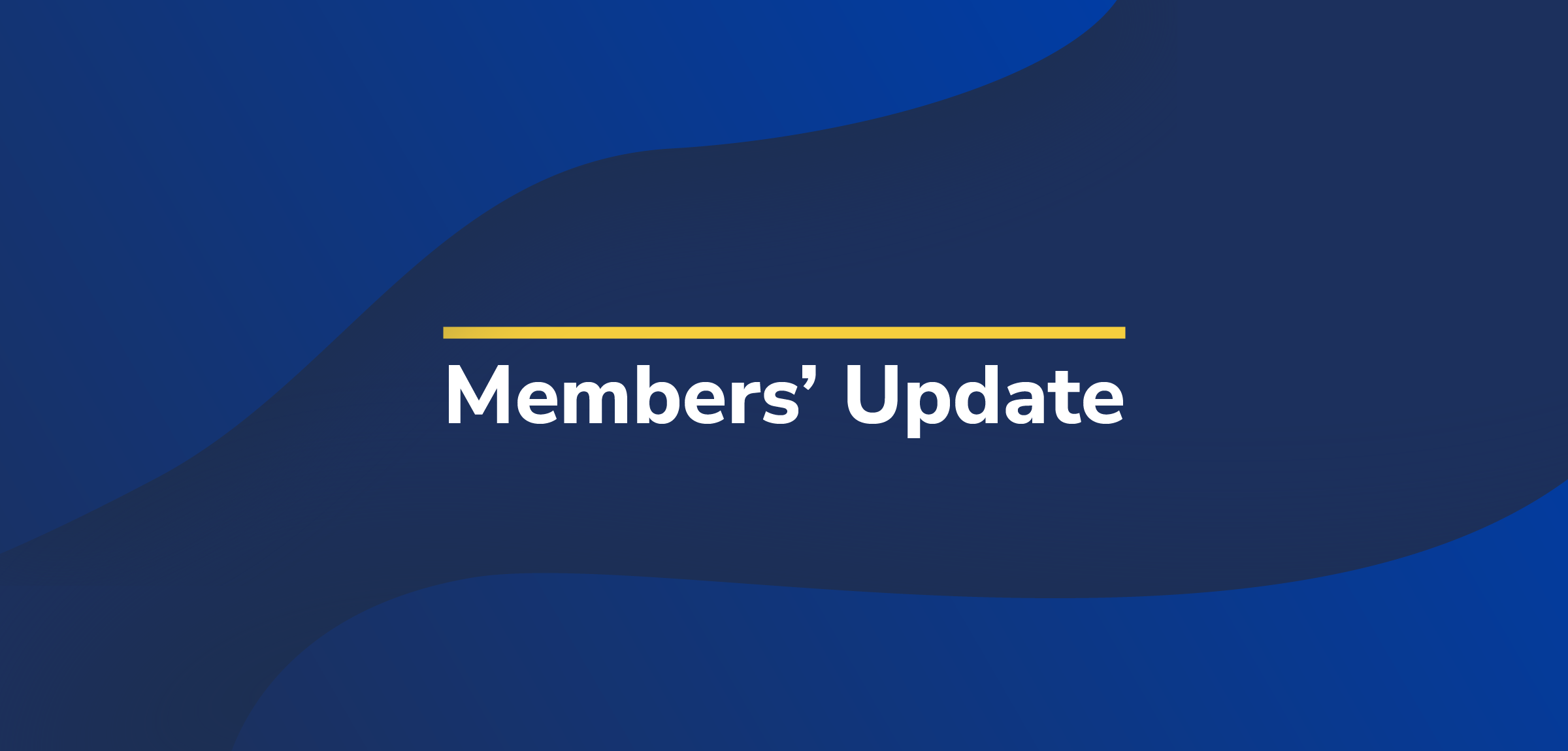The Alberta Teachers’ Association fully supports the protection of gender-affirming practices for all students and staff and the right of students to self-identify safely and confidentially in school environments.
New amendments to the Education Act will take effect September 1, 2025, related to
- parental notification and consent for students (under 16) to use preferred pronouns/names, and notification for ages 16–17;
- parental notification and opt-in consent for subject matter dealing primarily and explicitly with gender identity, sexual orientation or human sexuality; and
- minister approval of learning and teaching resources and external parties who present learning and teaching resources that deal mainly and openly with gender identity, sexual orientation or human sexuality.
Find further information below on the amendments and how they will affect your classroom. For additional questions, contact Teacher Employment Services at 1-800-232-7208.
Education Act amendment details
Review the amendment details on the Government of Alberta's Supporting Alberta students and families webpage
Visit alberta.caQ and A about the amendments to the Education Act (formerly Bill 27)
The Legislation
What are the changes to the Education Act (formerly Bill 27)?
Starting September 1, 2025, the amendments to the Education Act will take effect, which will require
- parental notification and consent for students under 16 to use their chosen pronouns or names, and parental notification for ages 16–17.
- parental notification and opt-in consent for subject matter that deals primarily and explicitly with gender identity, sexual orientation or human sexuality.
- minister’s approval for learning and teaching resources that deal primarily and explicitly with gender identity, sexual orientation or human sexuality. This requirement also includes learning and teaching resources presented by external parties.
How does this affect my classroom?
Teachers will need to confirm that parental opt in has been provided to the school before covering topics on gender identity, sexual orientation or human sexuality. Teachers also need to ensure that parental notification and consent for using different pronouns have been provided to the school for students under 16. These requirements add administrative steps and potentially limit timely support and inclusive instruction.
Be smart and aware of your employment-related obligations. Be compliant with the new legislation but also be cognizant to not over-apply the legislation. If you have any questions, contact Teacher Employment Services (TES) at 1-800-232-7208.
Are incidental references to gender identity, sexual orientation or human sexuality included in the application of this legislation?
In the context of the amendments to the Education Act, incidental references are brief, unplanned mentions of topics like gender identity, sexual orientation or sexuality that arise naturally during lessons but are not the focus of instruction. These do not require parental notification or consent under the legislation. Incidental references are quick, relevant acknowledgments that don’t shift the lesson’s primary focus and, therefore, do not require prior parental notification under Bill 27.
Examples could include but are not limited to
- Literature class: A student mentions that their cousin identifies as non-binary during a conversation about a novel. If the teacher acknowledges the comment and moves on without turning it into a broader discussion about gender identity, this would be considered an incidental reference.
- Health class: While discussing puberty, a student asks if all boys grow facial hair. The teacher briefly mentions that not all boys identify as male or go through the same changes. If the remark is quick and not turned into a lesson on gender identity, it’s incidental.
- Science class: While teaching human reproduction, a student asks whether all people with uteruses are women. The teacher responds briefly by saying, “Not everyone who has a uterus identifies as a woman,” then returns to the biology content without elaborating.
Do the amendments to the Education Act apply to sexual orientation?
No. The amendments to the Education Act apply to pronouns and name change in the context of gender identity and do not apply to sexual orientation or human sexuality or relationship diversity. It applies only to the T or Q in the 2SLGBTQIA+.
Students and the Classroom
What do I do if a student asks me to use a different name or pronouns?
If the student is under 16, you must not use the student’s chosen name or pronouns until you have written parental consent. Try explaining that you are required by law to notify their parent(s) and get permission first. Ensure the student feels heard and supported and follow your school’s process for reporting or seeking help from administration or counselling.
If the student is 16 or 17, you are required to notify their parent(s) if the student asks to be referred to by a different name or pronouns, even if the student does not consent. There is no option to withhold notification under the changes to the Education Act.
Parental notification and consent for name change are required only if the change reflects the student’s gender identity. If a student simply wants to go by a shortened version of their legal name (for example, Liz instead of Elizabeth) or a nickname unrelated to their gender identity, Bill 27 does not require parental notification or consent. Nicknames do not trigger the parental notification rule.
By September 1, 2025, school boards are required to develop new administrative policies related to the amendments to the Education Act. It is important for teachers to be aware of relevant board policy (ie, administrative procedures). Check with your administrator for further information.
If a student asks for name or pronouns changes before the amendments to the Education Act takes effect on September 1, 2025, you can continue to use that name and pronouns. You can also continue to use gender-affirming language that is not binary.
What do I do if I believe following these requirements may cause harm to a student?
The amendments to the Education Act legally require teachers to notify or obtain parental consent for changes in name or pronouns based on a student’s gender identity. Teachers are also bound by the Education Act, the Teaching Quality Standard (TQS) and child protection laws to ensure a safe and caring learning environment for every student.
If teachers believe that complying with the changes to the Education Act may result in harm to a student (such as emotional distress, rejection or abuse):
- Do not act alone. Involve your school administrator immediately. They must guide the next steps and help assess the situation.
- Document your concerns factually and professionally, focusing on the student’s safety and well-being.
- Consult your school division’s protocols on duty to report, student confidentiality and child protection obligations.
- If there is reason to believe the child may be at risk of harm, you are legally obligated under Alberta’s Child, Youth and Family Enhancement Act to report those concerns to Child and Family Services (CFS).
If you believe that the requirements may cause harm to a student, speak with your school administrator. For example, when parental notification is reasonably expected to cause harm to the student, the school board is required to provide counselling or other supports before notifying parents.
It is your duty as a teacher to follow the law and your school division’s policies. However, if you’re concerned that the legal and policy requirements related to the new legislation could negatively impact a student, bring your concerns to your school administrator. Be sure to document your concerns.
How do I refer a student for counselling support?
If there is access to a school counsellor:
- Refer the student to the school counsellor
→ Use your school’s established referral method (eg, form, email, portal).
This ensures the student receives timely, professional support from someone trained to assess risk and well-being. - Inform your school administrator
→ Let them know a referral has been made.
This keeps the school leadership aware of student needs and ensures a coordinated response, especially if safety concerns arise. - Reassure the student
→ Let the student know support is available and confidential within legal limits.
This builds trust and helps the student feel safe while navigating a vulnerable situation. - Document the referral
→ Record the date, reason and referral method in your professional notes.
This provides accountability and a record of actions taken under Bill 27 and duty-of-care obligations. - Follow up discreetly
→ Touch base with the counsellor or admin to confirm next steps—without prying into session details.
This ensures the student’s needs are addressed while respecting their privacy and professional boundaries.
If a school counsellor is not available, schools can refer students to Counselling Alberta
You can contact Counselling Alberta in the following ways:
- Register online at any time by selecting Register for Counselling on the landing page or going to http://register.counsellingalberta.com to access the online intake form.
- Register by phone at 833-827-4230, Monday to Friday, from 9 AM to 4 PM.
Teachers do not need prior permission of parent(s) or guardian(s) to refer students for counselling support. But administrators should be informed, and student confidentiality and safety must guide all actions.
How can I maintain a gender-affirming and inclusive classroom environment in light of the new legislation?
You can still foster a welcoming, respectful and inclusive classroom for all students by focusing on the universal values of belonging, dignity and safety, while staying within the legal framework of the amendments to the Education Act:
- Use inclusive language (eg, everyone, friends, they/them, learners, mes amis)
→ Avoid assumptions and ensure that no one feels excluded, without requiring parental notification. - Respect incidental references
→ Acknowledge student identities or diverse family structures when they come up naturally, without making them the focus of instruction. Acknowledge and affirm same-gender/sex families. - Model respect for all identities
→ Set the tone by addressing bullying, using inclusive language, and reinforcing classroom norms of kindness and safety. - Display inclusive visual cues
→ Posters, books and materials that reflect diversity (including 2SLGBTQIA+ identities) are allowed, as long as they aren’t used for explicit instruction that require opting in. Use safe space visuals and provide physical spaces in compliance with the board’s policy (eg, gender-neutral bathrooms). - Refer students to school counsellors
→ If a student shares something personal, you can offer support through counselling—even before notifying parents—if there are concerns about student safety.
Does the new legislation apply to student GSAs and extracurricular activities?
Yes, in part. While Bill 27 does not ban GSAs (gay–straight or gender–sexuality alliances), it does apply to any GSA activities or materials that involve explicit instruction or presentations on gender identity, sexual orientation or sexuality.
- Student-led discussions and peer support in GSAs can continue. These are protected under Alberta law as part of students’ rights to form voluntary clubs.
- However, if a GSA invites a guest speaker or uses resources that explicitly teach or present on gender identity, sexual orientation or sexuality, those materials must be
- approved by the minister of education in advance and
- provided to parents with 30 days’ notice and opt-in consent if the activity is considered instruction based.
- Within their local GSAs, teachers can still
- support the formation and supervision of GSAs;
- provide a safe, affirming space for students to meet; and
- encourage student leadership while ensuring that any formal presentations or workshops align with current policy and get admin approval.
What does opting in mean for parents regarding instruction on gender identity, sexual orientation or human sexuality?
Where classroom content includes subject matter that deals primarily and explicitly with gender identity, sexual orientation or human sexuality, school authorities must notify parents at least 30 calendar days in advance and provide parents the option to opt in their child, rather than opt out, for this instruction. This does not apply to other subjects or incidental references to these topics. School authorities will develop policies for opt-in notification for parents. Check with your administrator for clarification on school division policies.
What other resources can I share with students who need support?
- Kids Help phone
- Skipping Stone
- Local GSA network or Rainbow Network resource centres
- SOGI123 and ARC foundation resources
- Egale resources
- Fyrefly Institute at the University of Alberta
Professional Issues
Can I use my own pronouns and chosen name?
The changes only apply to parental notification and consent for students’ gender identity-related names and pronouns. There are no requirements in the Education Act about staff sharing their own pronouns or names. It is important to check your school division’s policies about the use of pronouns and chosen names (for example, in employee email signatures).
Do I have to follow the legislation? What happens if I don’t?
The requirements outlined in the amendments to the Educations Act apply to teachers and teacher leaders. Noncompliance may risk discipline in employment, an ATPC (Alberta Teaching Profession Commission) complaint or a concern about competence. A teacher is required to conduct themselves in accordance with the law, employer policies, and the Teacher and Teacher Leader Code of Professional Conduct. Understanding and adhering to legal frameworks and policies is one of the TQS competencies. This is demonstrated by being aware of and responding in accordance with requirements in the act and engaging in practices consistent with school division policy and procedures. If you receive direction from your administrator about the interpretation or implementation of the legislation, ask for it in writing. If you have any questions, contact TES at 1-800-232-7208.
Are teacher professional development resources and workshops subject to the new approval process?
Teacher professional development (PD) resources and workshops are not subject to the new approval process.
If you would like to use a PD resource or materials from a PD workshop in your classroom with students, the resource then becomes subject to the approval process as it would be considered a teaching or learning resource.
Where can I get support or report concerns?
There are different mechanisms in place to get support or report concerns. Contact TES at 1-800-232-7208, and a staff officer can review the information, including the school board’s policy, and offer different follow-up options.
What should I say to parents who ask about these issues?
Check the school board’s policy for how parent concerns should be handled. Some divisions have policies that specify which person parents should contact first when raising issues. Refer parents to the school administrator if they ask about issues that involve the board’s policy and meeting the requirements of the legislation. If parents have questions about the legislation changes, refer them to the government’s Q and A tip sheet.
What if I have a concern about the school board’s policy being in accordance with the Education Act?
Review the school board’s policy and applicable sections of the Education Act, the government’s resource documents for parents and the Q and A tip sheet. Contact TES at 1-800-232-7208 for support. If the board’s policy includes a process for addressing concerns, or if the board has a general policy on reporting concerns, that should be followed. Where there is no policy about addressing concerns, bring the concern to your principal. Note specific parts of the policy and sections of the Education Act that may not be aligned. Document your concerns and the steps you take to follow up.
Resources
Where do I find the list of teaching resources I can use?
Starting August 2025, Alberta Education will maintain a list of approved teaching and learning resources on New LearnAlberta. This list will be updated quarterly.
Ask your school board for the list of approved teaching and learning resources, as some resources may have already been approved for use but not yet added to New LearnAlberta.
What happens if I want to use a resource that is not on the list of approved resources?
Consult your school board first before using the resource. The resource may have already been approved but not yet added to the New LearnAlberta approved resources list. If the resource has not been approved and requires approval, your board will initiate the approval process for that resource.
Is the website teachingsexualhealth.ca an approved resource?
Teachingsexualhealth.ca is a reputable Alberta-based resource that many teachers use to inform planning and instruction. Alberta Education has stated that they are working with teachingsexualhealth.ca to put these resources through the approval process. However, as of the date this document was written, Alberta Education has not yet released approved resource lists so it is unclear if/when these resources will be approved and in what form they will be shared.
What could happen if I (accidentally) use a resource that is not on the list of approved resources?
Starting September 1, 2025, the minister’s approval is required for learning and teaching resources dealing primarily and explicitly with gender identity, sexual orientation or human sexuality.
Check your school board’s policy for any directives about reviewing materials currently in use and how the approval process will be handled. In the event that a resource that you used is not on the approved list, stop using the resource immediately. Document what the resource was, when it was used and with which classes. Call TES at 1-800-232-7208 for support. Follow-up steps may also include informing your school administrator and getting direction from them on next steps.
What can I do if my administrator tells me to remove all inclusive materials?
Ask for this direction in writing, including the specific items that they are requesting to be removed and a rationale for the request. Call TES at 1-800-232-7208 for support.



